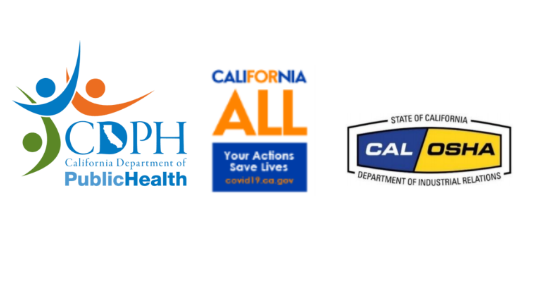Title Page
-
Conducted on
-
Prepared by
-
Location
Contents of Written Worksite Specific Plan
-
The person(s) responsible for implementing the plan.
-
A risk assessment and the measures that will be taken to prevent spread of the virus.
-
Training and communication with employees and employee representatives on the plan.
-
A process to check for compliance and to document and correct deficiencies.
-
A process to investigate COVID-cases, alert the local health department, and identify and isolate close workplace contacts of infected employees until they are tested.
Topics for Employee and Volunteer Training
-
Information on COVID-19, preventing spread, and who is especially vulnerable. <br>https://www.cdc.gov/coronavirus/2019-ncov/index.html
-
Self-screening at home, including temperature and/or symptom checks using CDC guidelines.<br>https://www.cdc.gov/coronavirus/2019-ncov/symptoms-testing/symptoms.html
-
The importance of not coming to work if employees have a frequent cough, fever, difficulty breathing, chills, muscle pain, headache, sore throat, the recent loss of taste or smell, or if they or someone they live with has been diagnosed with COVID-19.
-
When to seek medical attention.
-
The importance of hand washing.
-
The importance of physical distancing, both at work and off work time.
-
Proper use of cloth face covers
-
Information on leave and workers’ compensation benefits.
Individual Control Measures and Screening
-
Symptom screenings and/or temperature checks.
-
Encourage workers who are sick or exhibiting symptoms of COVID-19 to stay home.
-
Frequent handwashing and use of hand sanitizer.
-
Provide disposable gloves to workers using cleaners and disinfectants if required. Consider gloves a supplement to frequent hand washing for other cleaning, tasks such as handling commonly touched items or conducting symptom screening.
-
Strongly recommend use of cloth face covers.
-
Post signage to communicate to customers that they should use face masks/covers.
Cleaning and Disinfecting Protocols
-
Perform thorough cleaning in high traffic areas.
-
Frequently disinfect commonly used surfaces.
-
Clean outdoor surfaces made of plastic or metal but not on playgrounds, wood, or sidewalks.
-
Clean and sanitize shared equipment between each use.
-
Disinfect equipment that passes between employees and customers, such as pens, reusable maps, etc.
-
Provide single-use maps, guides, etc., and make them digitally available for visitors’ electronic devices.
-
Only use audio headsets if they can be properly disinfected after each use.
-
Equip workplace terminals with proper sanitation products, including hand sanitizer and sanitizing wipes and ensure availability.
-
Ensure that sanitary facilities stay operational and stocked at all times.
-
Provide hand sanitizer for visitors at high traffic areas, such as entrances.
-
Use products approved for COVID-19 on the Environmental Protection Agency (EPA)-approved list and follow product instructions and Cal/OSHA requirements.<br>https://www.epa.gov/pesticide-registration/list-n-disinfectants-use-against-sars-cov-2
-
Provide time for workers to implement cleaning practices during shifts and consider third-party cleaning companies.
-
Install hands-free devices if possible.
Physical Distancing Guidelines
-
Implement measures to physically separate workers by at least six feet using measures such as physical partitions or visual cues (e.g., floor markings, colored tape, or signs to indicate to where workers should stand).
-
Designate separate routes for entry and exit into outdoor exhibits, galleries, and indoor employee workspaces to help maintain physical distancing, and establish directional hallways to prevent employees and guests from passing by one another.
-
Display signage to remind people of physical distancing and use of face coverings.
-
Dedicate staff to direct guests at high traffic areas to prevent congregating.
-
Limit the maximum occupancy to support physical distancing.
-
Limit visitor groups to six or fewer people and do not combine people from different households into the same tour group.
-
Rearrange or remove seats to allow for physical distancing between visitors.
-
Close interactive exhibits where physical contact is necessary.
-
Reconfigure office spaces, workstations, checkout counters, etc., to allow for at least six feet of physical distancing between employees.
-
Stagger employee breaks, in compliance with wage and hour regulations, if needed.
-
Reconfigure, restrict, or close break rooms and provide an alternative where physical distancing can be practiced.
-
Avoid sharing vehicles when traveling on property. Use face coverings if people must travel together.
-
Limit the number of individuals riding in an elevator and encourage the use of face covers.
-
Eliminate person-to-person contact for delivery of goods.
-
Redesign parking lots to limit congregation points and ensure proper separation, and limit contact at pay stations.
Sign Off
-
Name and Signature
















